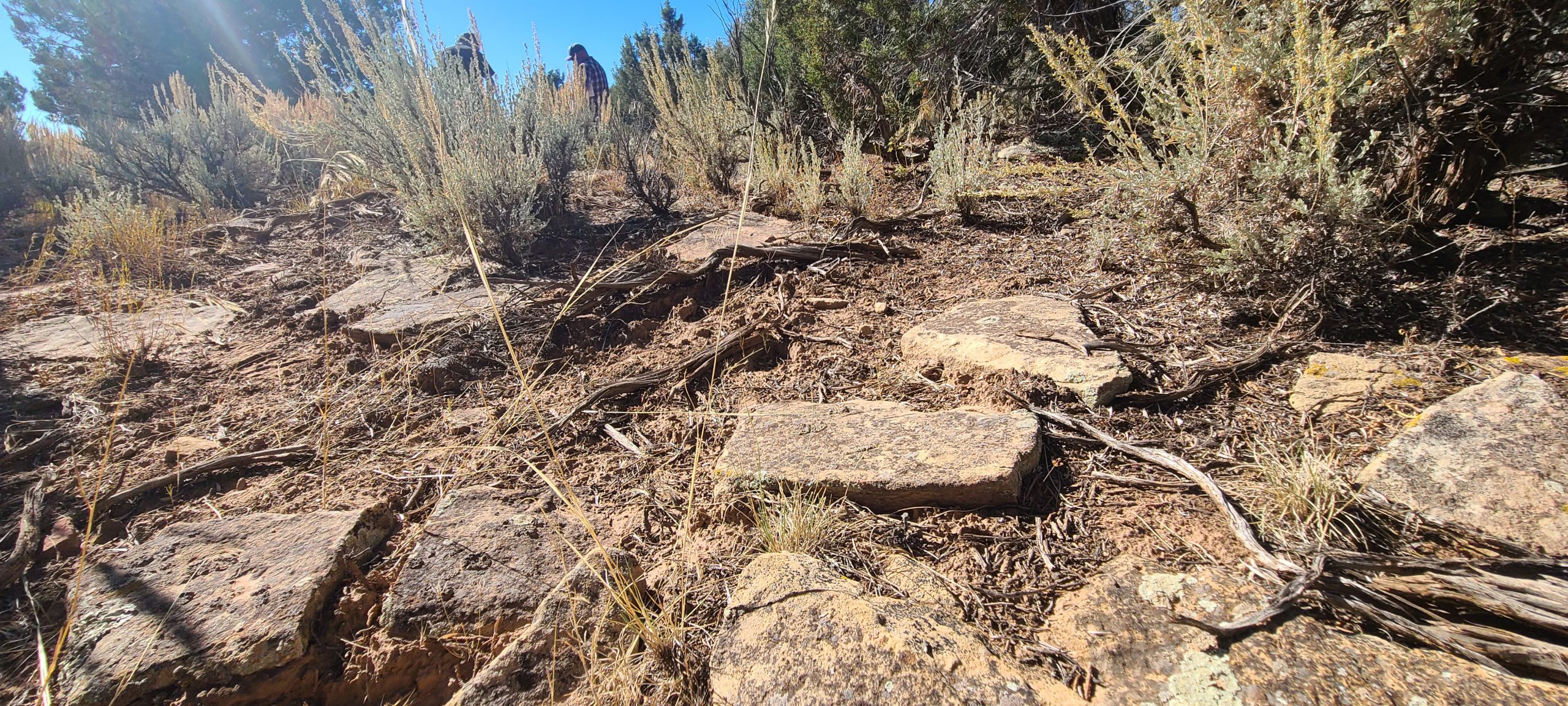
Grant Coffey of Crow Canyon Archaeological Center holds a Pueblo I pottery fragment. Photo credit: April M. Brown / TAC
The Conservancy has preserved a large Pueblo I village site near Cahone, Colorado. The new preserve was purchased from landowner Sidney Knuckles, who discovered stacked stone and pottery fragments while attempting to clear the field for planting. Knuckles later contacted archaeologist Grant Coffey of Crow Canyon Archaeological Center to come out and assess the find. Upon further investigation, Coffey recognized that there was a large Pueblo I village site buried on approximately 40 acres. LiDAR imagery helped confirm the discovery. Coffey’s determinations are based on observable architecture and pottery assemblages. Room blocks throughout the site are visible as low mounds of sandstone slabs and rubble. He estimates there are about 14 separate room blocks with approximately 480 surface rooms that could have housed up to 600 people during its height. If the rooms were occupied contemporaneously, this would make the Knuckles Archaeological Preserve one of the largest Pueblo I villages in the Mesa Verde region.
The village may contain a great kiva adjacent to an oversized pit structure with unusual characteristics. The structure has a U-shaped room block that faces north along with some interesting wall alignments that appear to segment household space. There is also a potential dam and reservoir at the site which, if confirmed, would be one of the oldest examples in the region. Surface pottery indicates that the site was built in the mid- to late-A.D. 800s with limited occupation into the A.D. 1000s. There is evidence of later construction in the southern portion of the site, but further study is needed to confirm construction dates.
The Knuckles preserve has not been formally recorded, excavated, or researched, so there is extraordinary research potential for the future. The new preserve is near the Carvel Site, which shares some similarities. Both sites have room blocks oriented along a north/south axis, a great kiva in the southeast portion of the site, and were constructed and occupied during the same period. Further study could reveal important information regarding the temporal and social connections between these two sites. Coffey said research at this site could “fundamentally reshape how we think about where people were during the Pueblo I period” leading to a better understanding of regional population dynamics and social interactions during the period.
Coffey introduced the Conservancy to Knuckles last year, who together devised a plan to subdivide the property and preserve the tract containing the important archaeology. The Conservancy officially acquired the 40-acre parcel in April. Immediate plans for the site include fencing, mapping, and site recording. The site will continue to be monitored by Knuckles and his family, as well as Coffey.




